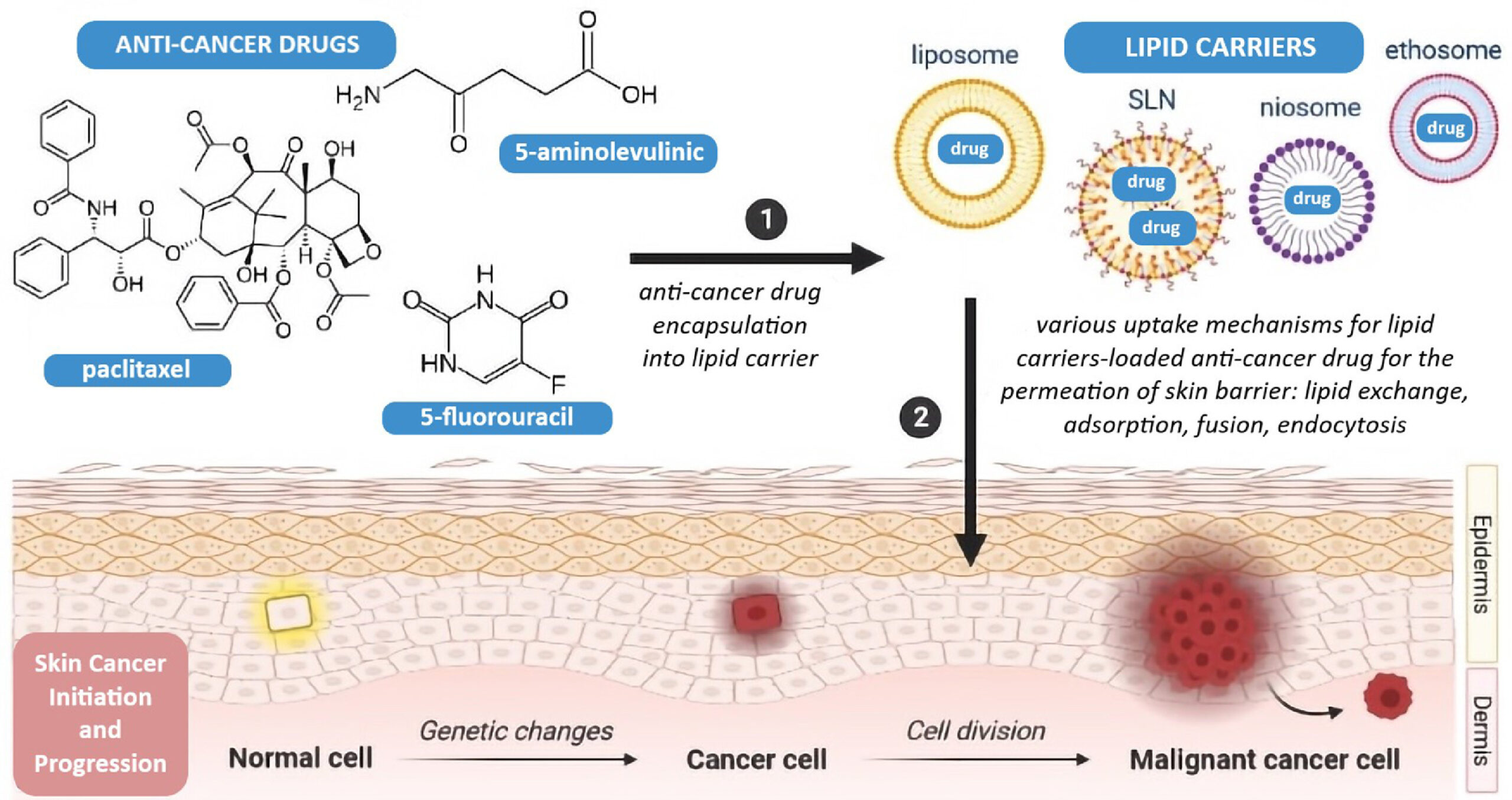Non-melanoma skin cancers: physio-pathology and role of lipid delivery systems in new chemotherapeutic treatments

Non-melanoma carcinoma has high incidence rates and has two most common subtypes: basal cell carcinoma and squamous cell carcinoma. This type of carcinoma is usually not fatal; however, it can destroy sensory organs such as the nose, ears, and lips. The treatment of these injuries using non-invasive methods is thus strongly recommended. Some treatments for non-melanoma carcinoma are already well defined, such as surgery, cryosurgery, curettage and electrode section, and radiotherapy; however, these conventional treatments cause inflammation and scarring. In the non-surgical treatment of non-melanoma carcinoma, the topical administration of chemotherapeutic drugs contributes for an effective treatment with reduced side effects. However, the penetration of anticancer drugs in the deeper layers of the skin is required. Lipid delivery systems (liposomes, solid lipid nanoparticles, nanostructured lipid carriers) have been developed to overcome epidermal barrier of the skin and to allow the drugs to reach tumor cells. These lipid nanoparticles contribute to control the release profile of the loaded chemotherapeutic drugs, maintaining their stability and increasing death of tumor cells. In this review, the characteristics of non-melanoma carcinoma will be discussed, describing the main existing treatments, together with the contribution of lipid delivery systems as an innovative approach to increase the effectiveness of topical therapies for non-melanoma carcinomas.
Download the full research paper as PDF: Non-melanoma skin cancers – physio-pathology and role of lipid delivery systems in new chemotherapeutic treatments
Excerpt: Lipid Nanoparticles
Lipid nanoparticles also play an important role in improving the efficacy and safety of chemotherapy in non-melanoma skin cancers. Solid lipid nanoparticles (SLN) consist of a solid lipid matrix (solid at room temperature) that allows the release of poorly soluble anti-cancers into target cells.
Nanostructured lipid carriers (NLC) are made up of a mixture of solid lipid and liquid lipid (in a combination that is also solid at room temperature) and have also proven the ability to deliver drugs to deeper layers of the skin, maintaining the stability of drugs and ensuring their accumulation in the skin, tumor cells and their anti-cancer function. The solid lipids commonly used in the production SLN and NLC include fatty acids (e.g., stearic acid, palmitic acid, myristic acid), triglycerides (e.g., tribehenate, tristearate, tripalmitate, trimyristate), cholesterol, waxes (e.g., bee wax, cetyl palmitate), and less pure mixtures (e.g. Imwitor®, Softisan®, Witepsol®). The liquid lipids that are in the composition of NLC are usually natural oils that can have anti-cancer properties (e.g., essential oils, monoterpenes) or medium chain triglycerides.
liana B. Souto, Raquel da Ana, Vânia Vieira, Joana F. Fangueiro, João Dias-Ferreira, Amanda Cano, Aleksandra Zielińska, Amélia M. Silva, Rafał Staszewski, Jacek Karczewski,
Non-melanoma skin cancers: physio-pathology and role of lipid delivery systems in new chemotherapeutic treatments,
Neoplasia, Volume 30, 2022, 100810, ISSN 1476-5586,
https://doi.org/10.1016/j.neo.2022.100810.

